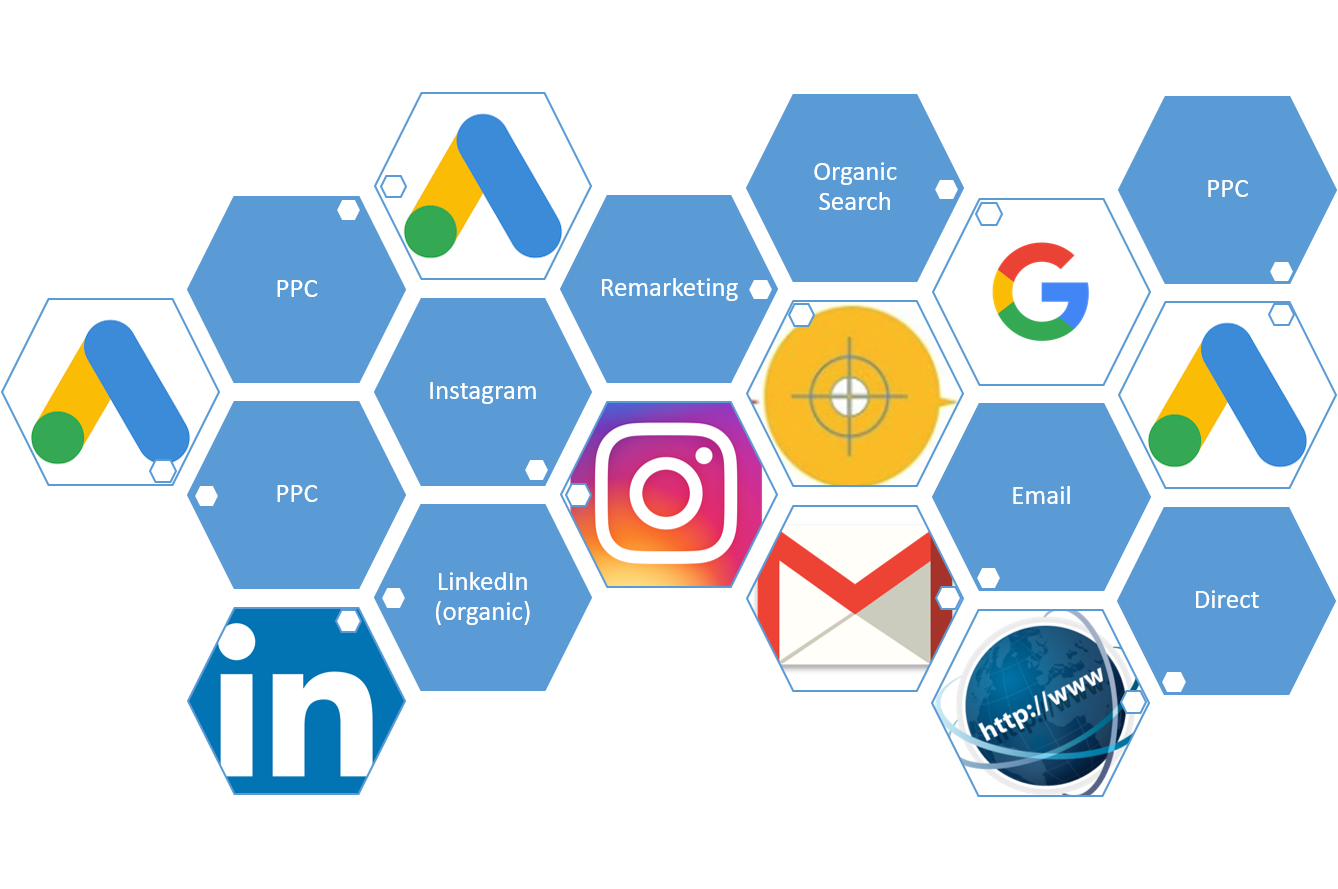Estimated Reading Time [est_time]
Pay Per Click advertising on Google Ads alone can’t always grow your business.
Coming from someone who bleeds PPC blood, this is a bold statement. However, I wanted to highlight how much change there is in our industry.
The market has changed and it’s tougher than ever out there. There are more choices than ever, more messaging than ever and more reviews than ever.
Whether you are buying a pair of trainers or a million pound software solution, there are so many more steps to making a decision than there used to be. This means marketing strategies need to embrace a multi-channel, multi-device approach.

15 years ago Organic search and Google Ads (Google AdWords back then) were a golden goose, the gift that kept-on giving. CPC’s for some markets were less than £0.10p per click. Even the most expensive markets were maybe £20 max CPC’s, but now you might see them over £100 in some markets, just for one click!
The competition has increased, the complexity of running a digital marketing strategy has intensified and the customer has become more savvy.
The previous challenge would have been to attribute conversions to keywords, but now it’s the attribution across any channel, online or offline and across any device, by location.
How have things changed? Let’s look at an example user journey.
Desktop/
You do a search:
“video conference software”

Then open 3 tabs in their browser to review 3 different providers.

QUESTION
Is time on site now as important as it once was, or possibly more important due to multi-tabs being open in a browser?

I guess it depends heavily on the product or service you are selling. But it certainly doesn’t mean what it used to.
Mobile & Desktop/
With emails, slacks and social media alerts from work, home and friends popping up to distract you, you suddenly remember that birthday card you never completed, still sat in your Moonpig basket from the last time you got distracted. You received an email reminder which prompted you to finish it off. (Just another example of a complex sales funnel of searches, emails alerts and reminders over several days).
So what happened to the “video conference software” you were looking for?
It becomes suppressed by other things, buried in the depths of your past. Until…
Mobile/
You are skimming through your Instagram account whilst waiting for a train and are reminded by an ad “So simple the CEO can use it – one-click video meetings”

NOTE: The time is now 7pm in the evening, you are not officially at work but you do still need to find a solution.
So rather than click through, you screengrab the ad on your phone and send it to your own email and set a task reminder for tomorrow. Then carry on scrolling.
NOTE: So you didn’t click or engage with the ad, but you did view it, read it and share it with yourself. All non trackable.
Desktop/
Next day back in the office your reminder goes off.
So you search for the company from the ad you saw on Instagram, you click on a brand ad to the website and get some more info.

NOTE: Still you do not buy and so far you have seen 2 search ads and one Instagram ad.
Meanwhile…after being further distracted by work, emails, Slack, social media, phone calls, you are doing some research for a client of yours. Whilst doing so you see a remarketing ad on one of the websites you are browsing. Another reminder and prompt to get in touch. This time a Free Demo is offered, so you go for it and sign up. This is swiftly followed by an email engagement about the demo and how someone will be in touch.
NOTE: You finally become a qualified lead but NOT yet a sale.
Now it’s time to realise the importance of brand signalling and due diligence.
Mobile & Desktop/
Now you have signed up for a demo, before you commit to anything more serious you do your due diligence:
- Look up the person who reached out to you on LinkedIn. Are they experienced, what is their role, what credentials and endorsements do they have as an individual?
- Look at the company LinkedIn page: how many of them? What credentials do they have?
- Look at the website again, either via paid, organic or direct click.

NOTE: This may be repeated for 2 or 3 or more providers in the market and multiple times in amongst the distractions.
In summary, the path to enquiry and sale has become more complex.
Multiple devices and online platforms are being used to access content and information at differing times of day no matter where you are.
If we break down just this one example of user engagement to sale, we can see 9 different touchpoints of which some will likely be missed by tracking functionality and discrepancies.

If you are still relying just on Paid Search to drive all your enquiries at the same CPA’s you used to achieve you may need to re-evaluate how you are tracking, monitoring and attributing your sales and leads back to your marketing efforts.
PPC in isolation will struggle to perform without any further support from any other channel.
For help and advice on how to attribute your success metrics or how to build a multi-touchpoint digital marketing strategy – Get in touch.






